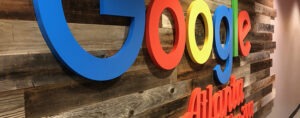news
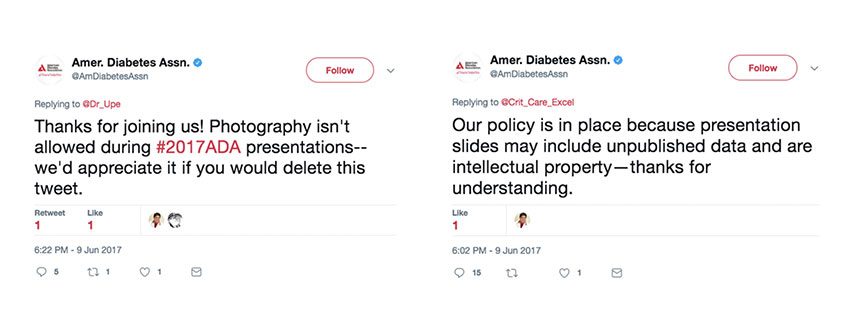
HARD LESSONS: THE AMERICAN DIABETES ASSOCIATION SOCIAL MEDIA PHOTO BAN
This past weekend, the American Diabetes Association set off a tweetstorm when it forbade the sharing of photos via Twitter during its 77th Scientific Sessions. The intention was to protect scientific research that had not yet been published but might be shared in sessions and subsequently disseminated on social media. Yet the far-reaching ban had a more deleterious effect. Their “media blackout” was decried as a “strong arm tactic”, and attendees were infuriated they couldn’t share what they had learned. Others encouraged the Association to “join the 21st century” while others shared political cartoons and memes. It became the biggest story of the Sessions– larger than the research and progress itself.
Sandeep Thekkepat said it best: “@AmDiabetesAssn disservice to professionals and people with diabetes by restrictive social media policy. This is THE story of #2017ADA”
As I shared on my own Twitter, it is my opinion that conference, class, and course tweets are important for engagement, learning, interaction & networking. That’s part of why the very idea of the shared conference hashtag came about, and why it’s so valuable. This theory has been preliminarily backed up by a recent study done by Hendrick Borgmann, MD, Sasha DeWitt, MD, and others. Conducted at two separate urological conferences, the research found that,
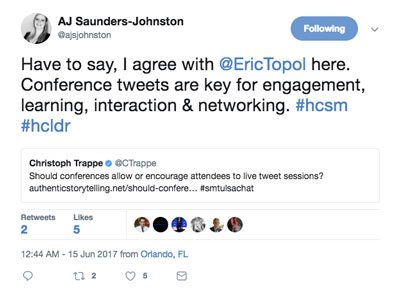
Among 312 total respondents, the greatest perceived benefits of Twitter among users were for networking (97%) and disseminating information (96%), followed by research (75%), advocacy (74%) and career development (62%). In total, 65% of Twitter users have dealt with guidelines on online medical professionalism and 71% of physician users found that Twitter had an impact on their clinical practice, and 33% had made a clinical decision based on an online case discussion.
The research makes it clear that those who are experts in their field see social media as a tool past just gaining followers. Subject matter experts (SMEs) look for ways to build connections with other SMEs in their specialty, or tangentially related to it. In my experience, it is not uncommon that users will schedule a meet-up at a conference or class based on tweets from a same hashtag. These in-person relationships formed from Twitter can prove invaluable.
Of everything good that comes from Twitter, photographs and other forms of multimedia content are a natural part of the social media experience. Those who did violate the published policy do shoulder responsibility, but it’s not their dubious actions that are in question here. It’s the decision of the ADA.
So what was the point of the Association’s protective measure? Those protesting the ban received the following response from the conference’s social media team: “Our policy is in place because presentation slides may include unpublished data and are intellectual property.”
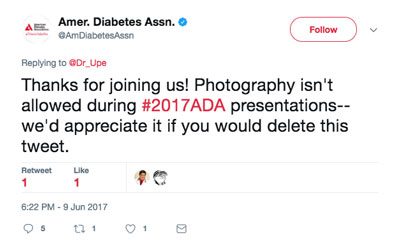
It’s entirely possible that pharmaceutical politics and sponsor endorsements played a part here. Having worked in the pharma industry myself, it isn’t an unreasonable request to keep these innovative developments private. But simply preventing photographs did not stop the sharing of these developments as a whole. Only preventing tweeting entirely could have done that, as what was visually shared on the slides could easily have been reprinted in text on a tweet. By searching the hashtag, we can see that this indeed did happen.
One way to address the PR side of the house would be special labeling of specific sessions. Sensitive, unpublished information would be shared as a “Cutting Edge Seminar: No Social Media Permitted”. Positive spin has the potential to increase interest and attendance, which would lead attendees to forgive the no-tweeting policy. Those who ignored the request not to tweet during those seminars would still have been met with the Association’s message, but others attending the conference could have freely shared imagery and tweeted without fear.
Alternatively, may I brazenly suggest that if presenters, researchers, or funding organizations don’t want their findings on social media, they withhold presenting on it until their ultimate goal has been achieved? Whether it’s publication, final funding or a patent, if a simple photo on social media would jeopardize the accomplishment of that goal then it is worth reconsidering whether that presentation is best at the current juncture. This is especially logical considering that word-for-word tweets came out of the conference regardless of the ban of photos. The above may be an unpopular opinion, but in the digital era, the information will get out. If you don’t want it out there, then it’s up to you to guard it.
But wait- what if a conference organization were to forbid social media entirely? Well, good luck with that. We saw plenty of “covert” photo tweets, and I don’t doubt that would happen if social media were silenced as a whole. Additionally, if we go so far as to prohibit tweeting or the mutual sharing of learning and knowledge by conference attendees through social media, then to my view, we are just another step closer to hindering the democratic participatory process in health care. Technology, including social media platforms, can be a global equalizer.
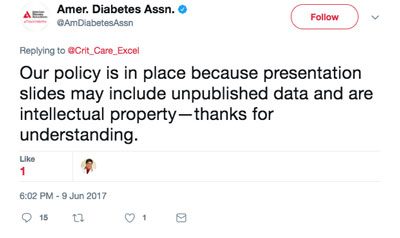
Telemedicine, virtual appointments and wearable technology allow physicians to meet patients where the patient is regardless of the physical location of the clinician, bringing a specialty across the world if need be. The same is done through Twitter chats. Through conference Twitter chats, we bring accessibility to those who cannot attend a $900 conference ticket but can virtually participate from afar, and open virtual participation in a community of which every single human being across the world is a part. We teeter on the edge of ethical issues by not opening ourselves up to conversation because someone couldn’t pay to attend a conference where that very information is being revealed. While I certainly don’t advocate for a loss of compensation for intellectual property, with this current set up we are essentially just offering paid previews of this knowledge for the financial elite. There is zero opportunity for feedback from communities that can’t pay the access price. However, that’s a conversation for another day.
Ultimately, while I can understand the American Diabetes Association’s desire to make their conference a safe place for presenters to share their research developments, I just don’t see how the photo ban was an effective way of doing so. Photos still got out, as did the information itself, defeating the goal of protecting the intellectual property. Worse still, the policy created bad press and societal ill-will toward an organization that had gathered thought leaders and donors in support of its cause. As Medscape Pharmacists went so far to say, “The biggest story at #2017ADA was not a scientific breakthrough. It was the ADA’s anti-social media behavior.” Considering alternative options for social media exclusion, and wider analysis on the part of researchers as to whether their information should be shared yet, constitute just a few baby steps to avoiding this situation at the 78th Scientific Sessions.

